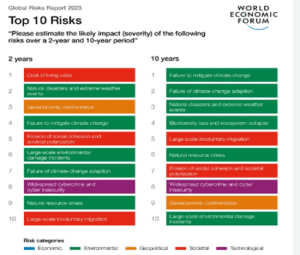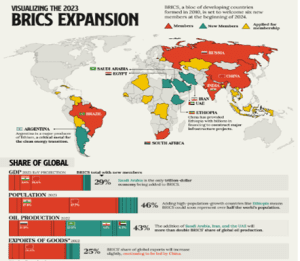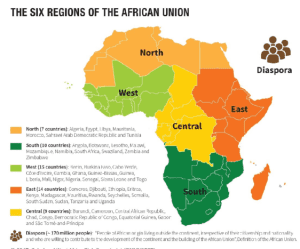(Newspapers, PIB and other important sources)
Prelim and Main
1. India suspends Free Movement Regime with Myanmar READ MORE
2. ‘Bail is rule, jail an exception’ does not apply in terror cases: Supreme Court READ MORE
3. El Niño On the Decline, La Niña On the Horizons! Here’s How the Pacific Twins Could Impact India This Year READ MORE
4. RBI pegs FY25 growth at 7%, inflation at 4.5% READ MORE
5. With CRISPR poised to revolutionise therapy, a pause to consider ethical issues READ MORE
6. Monkey Fever Symptoms: Top 7 Warning Signs That Say You Are Infected With Kyasanur Forest Disease Virus READ MORE
7. Rajya Sabha passes Bill to amend Water Act to decriminalise minor offences READ MORE
8. Cabinet approves new scheme for MSMEs in fisheries sector READ MORE
9. Clean water crisis: Nitrogen pollution to triple scarcity in river sub-basins worldwide READ MORE
10. Olive Ridley turtles are back on Mangaluru beaches! READ MORE
Main
GS Paper- 1
1. Charting a path for the population committee READ MORE
2. Privilege equality over uniformity READ MORE
3. Pitfalls for tourists: HP must warn visitors of deadly spots READ MORE
4. Deep Seabed Mining in the Arctic READ MORE
GS Paper- 2
POLITY AND GOVERNANCE
1. Towards uniformity: On the UCC adopted by the Uttarakhand Assembly READ MORE
2. Should coaching be restricted to those above 16 years? READ MORE
3. What makes government schemes and missions work READ MORE
4. Good leaders are a credit to the police: Vital to ensure that unsuitable officers are not elevated to high positions by those in power READ MORE
5. NGOs have a major role to improve development indicators READ MORE
SOCIAL ISSUES
1. The role of caste and gender in determining science education in India READ MORE
2. Establishing meaningful educational priorities READ MORE
INTERNATIONAL ISSUES
1. Ditch the ‘rules-based international order’ READ MORE
GS Paper- 3
ECONOMIC DEVELOPMENT
1. What the white paper on economy says — and doesn’t READ MORE
2. MPC keeps it tight, for now READ MORE
3. RBI’s battles with inflation READ MORE
4. Interim Budget shows fiscal discipline and prudence READ MORE
5. Solar scheme offers free electricity and economic empowerment READ MORE
6. International CRAs: Anything but fair READ MORE
7. The rising inequality READ MORE
ENVIRONMENT AND ECOLOGY
1. Policies and politics are vital for air pollution mitigation READ MORE
SCIENCE AND TECHNOLOGY
1. Can open new doors READ MORE
INTERNAL SECURITY
1. Cybersecurity concerns amidst rising cyber threats READ MORE
DISASTER MANAGEMENT
1. In Morbi’s debris, the role of the State in PPP projects READ MORE
GS Paper- 4
ETHICS EXAMPLES AND CASE STUDY
1. Need to tread warily: Human trials of a brain-reading chip have elicited hope, but the concerns must be addressed READ MORE
2. To see life as an infinite gamble READ MORE
3. What a pleasure! READ MORE
4. Supreme Court’s ‘murder of democracy’ remarks on Chandigarh mayor polls give ammo to Oppn READ MORE
5. To link or delink neural connections READ MORE
Questions for the MAIN exam
1. NGOs have significantly influenced participative governance, contributing to the formulation of landmark laws but they are facing significant challenges that hindering their effectiveness. Examine.
2. NGOs act as catalysts for change, addressing gaps in transformation, supporting marginalised groups, delivering essential services, and persuading better policy decisions. Comment.
3. A UCC is neither desirable nor necessary, and, instead, each body of personal law be reformed to eliminate discrimination or regressive practices. How far do you agree view this view?
4. The concept of justice should not be lost in the search for uniformity, and it should be no more than an incidental consequence of equality. Comment.
5. Community connect, respect for the federal principle, civil society partnerships and women-led development are necessary conditions for a more inclusive India. Comment.
6. The ‘Pradhan Mantri Suryodaya Yojana’ represents a significant step towards sustainable energy adoption, promising not only free electricity but economic empowerment. Discuss.
QUOTATIONS AND CAPTIONS
- It’s the responsibility of the police to maintain the government’s prestige and protect the honour of the citizens.
- When the Constitution makers made the adoption of a UCC one of the directive principles, opinion was divided on whether a UCC will undermine minority rights or promote equal status for women in all religions.
- A UCC is neither desirable nor necessary, and, instead, each body of personal law be reformed to eliminate discrimination or regressive practices.
- The concept of justice should not be lost in the search for uniformity, which should be no more than an incidental consequence of equality.
- The population committee needs to adopt an interdisciplinary approach if it is to tackle issues that affect family planning, maternal and child health, education, employment, and socio-economic development in India.
- Community connect, respect for the federal principle, civil society partnerships and women-led development are necessary conditions for a more inclusive India.
- STEM education is crucial for technological progress, and students with a knack for these subjects should have the opportunity to pursue them. However, there are socio-economic, gender, and racial disparities in pursuing STEM majors and careers.
- The government is mandated by the law and the Constitution to provide a safe, secure environment to the people who have elected it.
- It is not necessary to look down upon technology as inferior to science. As a matter of fact, it is technological breakthroughs like the telescope and microscope that have opened up hidden universes and enabled scientific discoveries.
- The intricate balance between practical demands of commercial relevance and scholarly aspirations within management education reflects the ever-changing nature of academia.
- The Finance Minister has not only demonstrated fiscal restraint and prudence in the election year but also balanced the Interim Budget in favour of common man.
- The ‘Pradhan Mantri Suryodaya Yojana’ represents a significant step towards sustainable energy adoption, promising not only free electricity but also economic empowerment.
- Collaborative efforts among NGOs, Government bodies and other stakeholders are vital for building a more inclusive, equitable and developed society.
- NGOs act as catalysts for change, addressing gaps in transformation, supporting marginalised groups, delivering essential services, and persuading better policy decisions.
- By embracing community-driven approaches, NGOs can access local resources and gain increased support from the people they serve.
- Despite their significant contributions, NGOs grapple with challenges such as limited funding, operational hurdles, and the need for sustainable models. Overcoming these challenges requires resilience and innovation as NGOs seek creative solutions to address the evolving needs of the communities they serve.
- The absence of data on women workers is a serious omission, as women in India have historically constituted approximately half the male workforce in the cultivation of crops.
ESSAY TOPIC
- Knowledge has become fundamental to economic development and technological advancement.
- The greatest resource of all economic development is the mind.
50-WORD TALK
- EC’s decision to give NCP name and symbol to Ajit Pawar faction was unsurprising. Its arguments for relying solely on legislative strength are convoluted. Assembly Speaker, a BJP leader, sits on MLAs’ disqualification petitions and EC uses their strength to rule in favour of BJP’s ally. It’s politics, not justice.
- Karnataka has joined Kerala, Tamil Nadu and Telangana in protesting Centre’s tax devolution policies. The timing works since 16th Finance Commission’s deliberations have just started. But such concerted criticism is another sign of worsening Centre-State relations. If the Centre is serious about fiscal federalism, it needs to rebuild states’ trust.
Things to Remember:
- For prelims-related news try to understand the context of the news and relate with its concepts so that it will be easier for you to answer (or eliminate) from given options.
- Whenever any international place will be in news, you should do map work (marking those areas in maps and exploring other geographical locations nearby including mountains, rivers, etc. same applies to the national places.)
- For economy-related news (banking, agriculture, etc.) you should focus on terms and how these are related to various economic aspects, for example, if inflation has been mentioned, try to relate with prevailing price rises, shortage of essential supplies, banking rates, etc.
- For main exam-related topics, you should focus on the various dimensions of the given topic, the most important topics which occur frequently and are important from the mains point of view will be covered in ED.
- Try to use the given content in your answer. Regular use of this content will bring more enrichment to your writing.







 Mahmudia Region
Mahmudia Region



